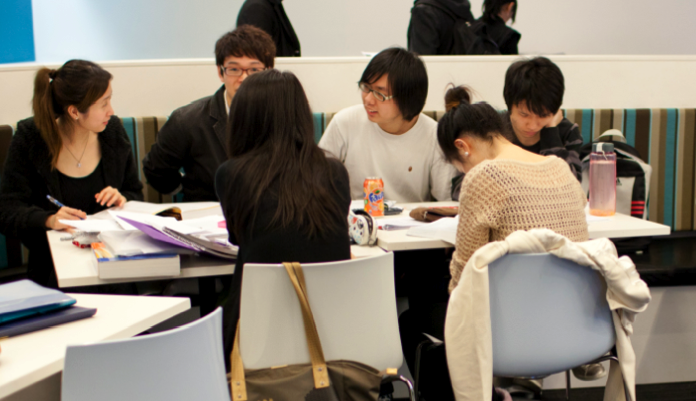
Group work in Building 5 Block C
|
Lecturers: Faculty: Subject: Keywords: |
|
Sandra Gallagher and Alan Sixsmith wanted to engage students and encourage collaboration using flipped learning principles in a subject that is often seen as dry and with little room for creativity. What the project initiatedThe project introduced a scenario-based virtual environment and in-class collaboration to this Finance and IT subject with a view to increasing students’ engagement with and understanding of key finance concepts. The group-based business simulations mean that students can now experience what it feels like to work in a business environment and how the core components of the subject operate in the real world. Why the project was introducedPreviously the subject was a relatively solitary rote-learning exercise where students were expected to learn via an online website that supplemented their textbook. This approach also discouraged students from attending class as there seemed little point in making the effort to come to class if they could just as easily do the work from home. There was very little collaboration and few opportunities to develop the Graduate Attributes embodied in the UTS Model of Learning, especially when it came to working with others, fostering cross-cultural understanding, or critical and independent thinking. Over a five or six-year period, Sandra and Allan redesigned the subject several times to where it stands today. How the project was implementedIn the Autumn 2013 semester, the laboratory was redesigned as a live, practical case study running as a virtual business requiring students to collaborate within their own laboratory class, and across laboratory classes in general. Each week, various business scenarios were distributed to the students to work on in groups. To support these business scenarios, the teaching team introduced an online toolbox that contained a series of financial templates, related examples and case studies, as well as various forms of online help. Students could access and work through these resources in their groups prior to undertaking the laboratory work in class. By keeping track of students’ work via the online platform, teaching staff were able to gauge students’ understanding of core financial concepts and address any issues as they arose. Challenges and considerations
Outcomes of the projectWhen the teaching team compared students’ overall grades in 2012 and 2013, the project’s positive results were evident. For example, in 2013 91% of students obtained a pass grade or higher, compared to only 60% in 2012; in 2013 50% obtained a credit or higher grade, whereas in 2012 it was only 18%. The project’s outcomes were also evaluated in the final laboratory where each group gave a final presentation. Students were asked to demonstrate their understanding of the subject by discussing what they found interesting and what they wanted to see improved. Overall, the students’ feedback was positive. In particular it was noted that the new learning environment encouraged students to develop their interpersonal skills, helped them to understand and retain their knowledge of key financial concepts through deeper learning processes, and made a subject that could be quite dry and “boring” actually fun and relevant.
Exploring further |

